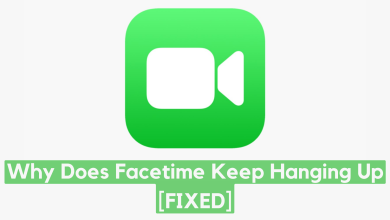AirPlay Not Working on Samsung TV? Here is How to Fix it
AirPlay may suddenly stop working on Samsung TVs, even when you’ve entered the correct code. Sometimes, the TV screen freezes or never displays your Apple device’s content. This usually happens because your Apple device cannot make a steady AirPlay connection to the TV, even though it can see it on the network.
 The most common reason is that your TV and Apple device are not connected to the same Wi-Fi network. They might also be on different Wi-Fi bands, like 2.4GHz and 5GHz, which can cause problems. Other possible reasons include outdated software on your TV, AirPlay being turned off, or interference from VPNs or privacy settings (such as “Private Wi-Fi Address”).
The most common reason is that your TV and Apple device are not connected to the same Wi-Fi network. They might also be on different Wi-Fi bands, like 2.4GHz and 5GHz, which can cause problems. Other possible reasons include outdated software on your TV, AirPlay being turned off, or interference from VPNs or privacy settings (such as “Private Wi-Fi Address”).
In this article, we will discuss different ways to solve this error.
1. Retry the Network Connection on the Samsung TV
A temporary network glitch or an unstable Wi-Fi connection can often cause this issue. When you retry the network connection on your Samsung TV, you force it to reconnect with your router. This process can clear up conflicts or dropped connections and refresh your TV’s network settings, helping AirPlay work correctly again.
- Select General in your Samsung TV’s Settings and then open Network.

- Select Network Status and then click the Retry button.

- Reconnect the Wi-Fi on your host device (e.g., iPhone) and check if AirPlay is now working correctly on your Samsung TV.
2. Re-Enable AirPlay in the Samsung TV’s Settings
Re-enabling AirPlay in your TV’s settings can resolve problems caused by the feature being disabled due to software updates, inactivity, or accidental changes. Turning AirPlay off and then on again refreshes the TV’s ability to detect and connect to your Apple device, restoring proper communication.
- Go to General in your TV’s settings, then open Apple AirPlay Settings.

- Select AirPlay and turn it off.
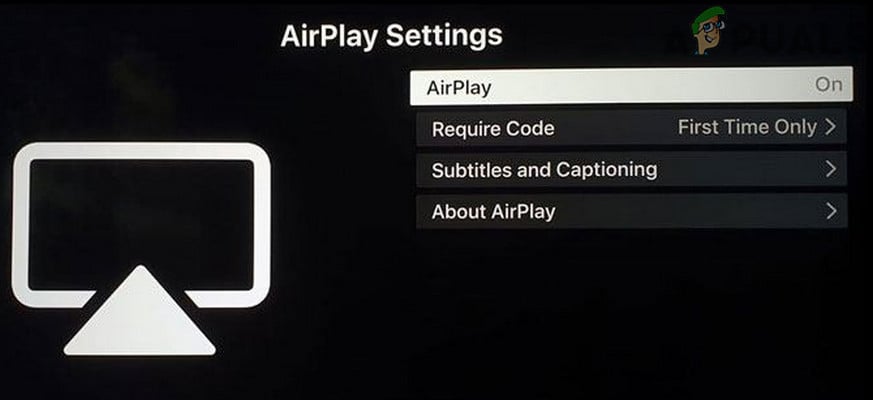
- Turn AirPlay back on and check if it’s working on your Samsung TV now.
3. Edit the Code Requirement for AirPlay and Reset Paired Devices
For a fresh connection every time, change the AirPlay code requirement to “Every Time.” This will prompt your Apple device and Samsung TV to re-pair, clearing out any outdated or incorrect pairing data. This way, you avoid issues caused by previously saved pairings and get a clean start for AirPlay.
- Open the Settings on your Samsung TV and go to General.
- Go to Apple AirPlay Settings and set Require Code to Every Time.
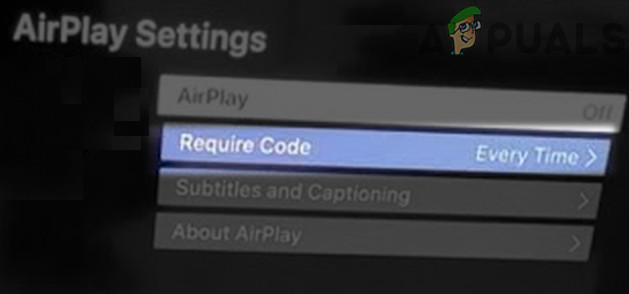
- Check if AirPlay is now working on your Samsung TV.
- If AirPlay still doesn’t work, try setting Require Code to Use Password Instead.
- If the problem continues, try resetting the paired devices in the Require Code section.
If these steps don’t help, repeat steps 1 and 2 to open Apple AirPlay Settings on your TV, then go to About AirPlay. If an option is available, switch the version to original and see if that fixes the issue.
4. Update the Firmware of the Samsung TV to the Latest Release
Outdated firmware can often cause connection problems with newer devices like iPhones and iPads. Updating your TV’s firmware gives you the latest bug fixes, new features, and improved compatibility for AirPlay.
- Open your Samsung TV’s Settings and go to Support.
- Select Software Update and then Update Now.
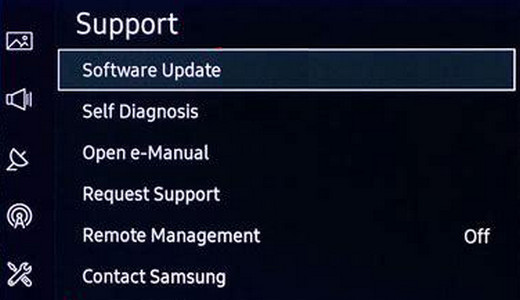
- If an update is available, allow it to download and install.
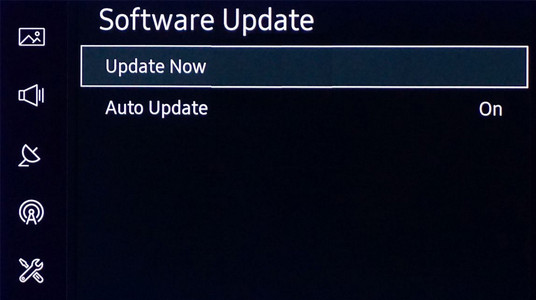
- After the update is installed, check if AirPlay works with your Samsung TV.
5. Update the OS of the Host Device to the Latest Build
Running an outdated operating system on your Apple device can cause AirPlay to stop working. The latest OS versions bring important fixes and improved compatibility. Update your device’s software to help ensure AirPlay works as expected.
- On a Mac, open System Preferences and choose Software Update.
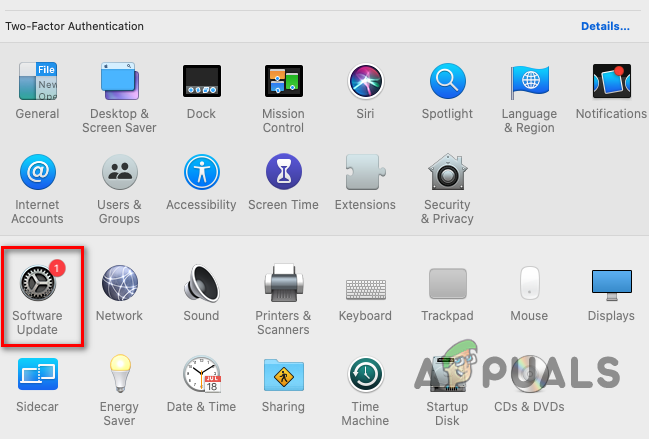
- If an update is available, click Update Now (or Upgrade Now).
- Once the update is complete, check if AirPlay is working again.
6. Disable the 5GHz Band and Enable the 2.4GHz Band on Your Router
Samsung TVs sometimes have trouble with the 5GHz Wi-Fi band because it doesn’t cover as much distance and is more likely to have interference. The 2.4GHz band, while a little slower, reaches farther and is much more stable, especially for streaming with AirPlay.
- Open your router’s web portal in a web browser and log in.
- Go to Settings and find Wireless options.
- Turn off the 5GHz band and make sure the 2.4GHz band is enabled.
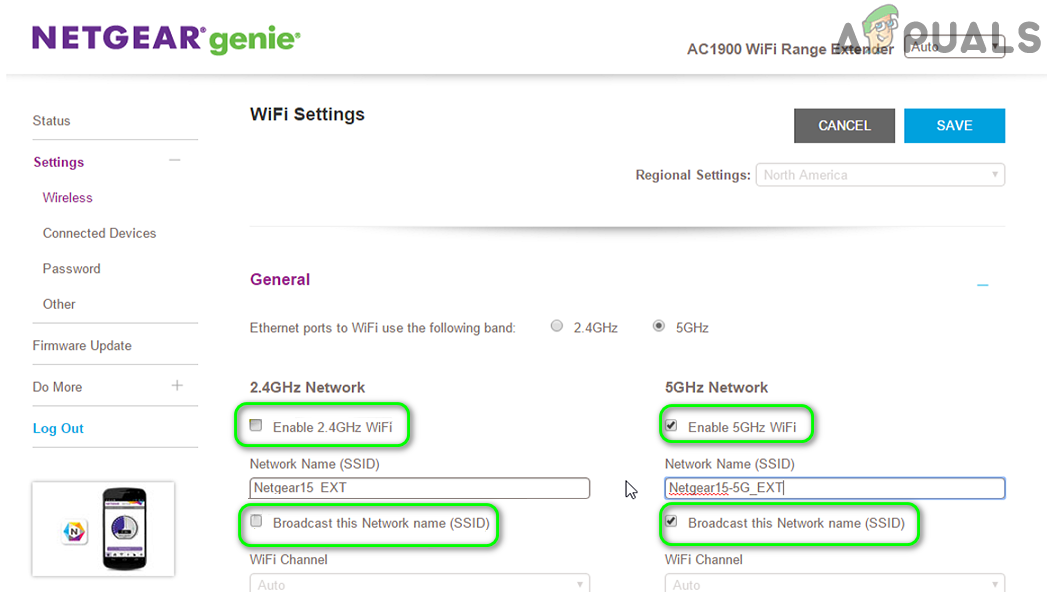
- Apply these changes, then ensure both your Samsung TV and host device connect to the 2.4GHz network. If prompted to join a 5GHz network, decline (or click Cancel).
- Check if your TV now works with AirPlay.
- If not, try reverting the Wi-Fi password to its default and see if that makes a difference.
If you’re still experiencing issues, try switching between wired (Ethernet) and wireless (Wi-Fi) network connections to see if AirPlay works better.
7. Disable Auto Protection Time on the Samsung TV
The Auto Protection Time feature on Samsung TVs can sometimes interfere with AirPlay by turning off the screen after a period of inactivity. Disabling this setting can prevent it from interrupting your AirPlay connection, ensuring a smooth streaming experience.
- Navigate to the General tab in your TV’s settings and choose System Manager.
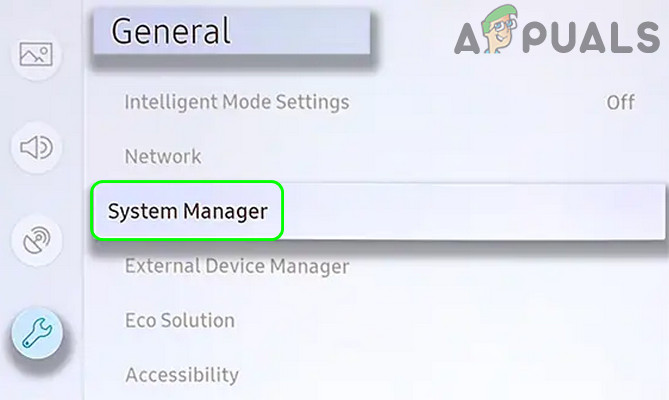
- Disable Auto Protection Time (usually the second-to-last option) and see if this resolves your AirPlay issue.

8. Enable the IP Remote in the TV Settings
If IP Remote is disabled, your Samsung TV may not respond to AirPlay because it won’t accept commands from your Apple device over the network. Enabling it ensures smooth communication between devices.
- Go to Settings on your TV and select General.
- Open Network and then choose Expert Settings.
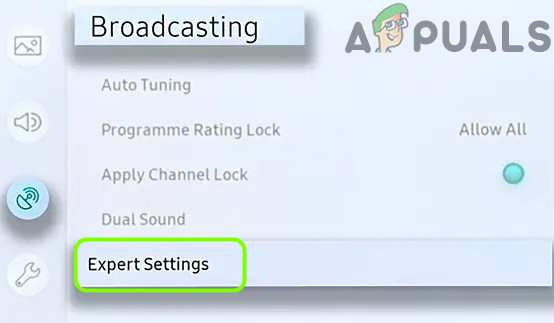
- Enable IP Remote and check if AirPlay now works on your TV.
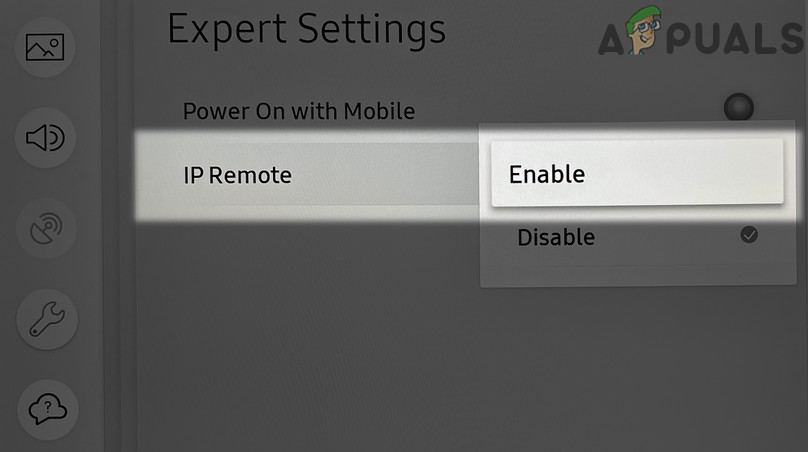
9. Disable IPv6 in the Samsung TV’s Settings
Some home networks and TVs work better using IPv4. Disabling IPv6 on your TV can help improve compatibility and stability for AirPlay connections.
- Open General in your TV’s settings and go to Network.
- Choose Expert Settings and turn IPv6 off.
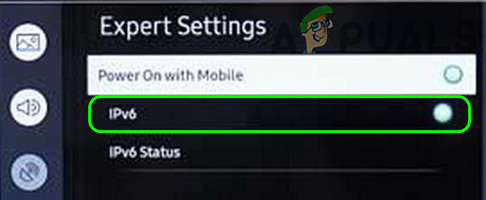
- Check if AirPlay is now working on the Samsung TV. If not, try disabling IPv6 on your host device as well (e.g., Mac or iPhone).
10. Edit the DNS Settings of Your TV
If your network’s DNS server is slow or unreliable, it can cause connection problems between your Apple device and TV. Manually setting DNS to a more reliable option, like Google DNS, can improve AirPlay.
- Go to the Network tab in your TV’s settings and select Network Status.
- Click on IP Settings and then select DNS Settings.

- Choose Enter Manually and input this Google DNS value:
8.8.8.8
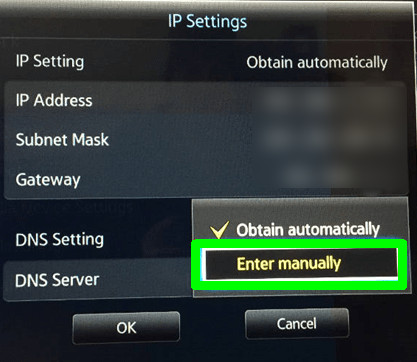
Manually Enter the DNS Values of the Samsung TV - Apply your changes and turn off the TV.

Enter the Values of Google DNS Server in the Samsung TV Settings - Wait at least one minute, then power the TV on and check if AirPlay is working.
11. Update the Router’s Firmware
An old router firmware can lead to slower networks and device compatibility issues, affecting AirPlay. Updating your router’s firmware ensures it’s secure and up to date.
- Go to your router’s web portal in a web browser and log in.
- Find the router’s Settings and navigate to the Administration (or System) section.
- Look for Firmware Update, Router Update, or Software Update and check for new updates. If one is available, apply it.
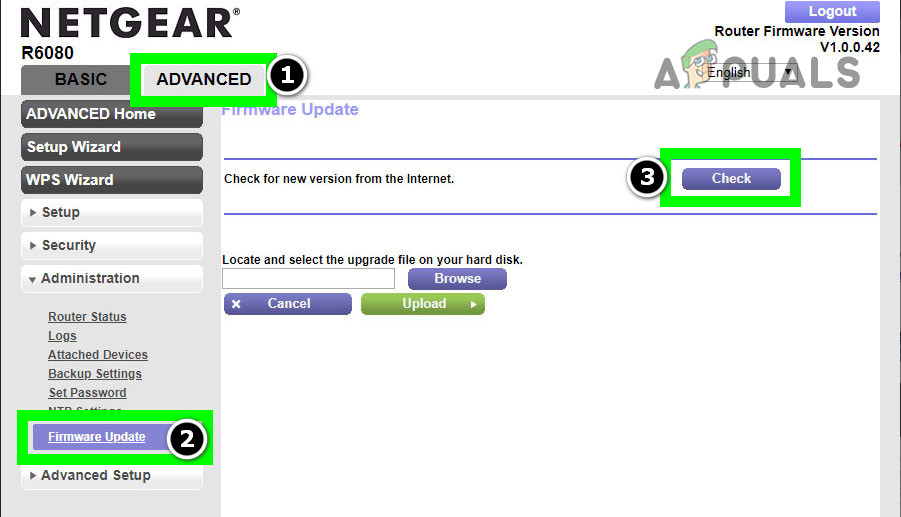
Check for the Update of the Router’s Firmware - After updating the router, see if AirPlay now works on your Samsung TV.
12. Disable the Firewall on the Host Device
A firewall can sometimes block the connections needed for AirPlay to operate. Temporarily turning off the firewall or adjusting its settings can allow your Apple device and TV to connect.
Warning: Proceed with caution; changing firewall settings might expose your device to security risks.
- On a Mac, go to System Preferences and select Security & Privacy.
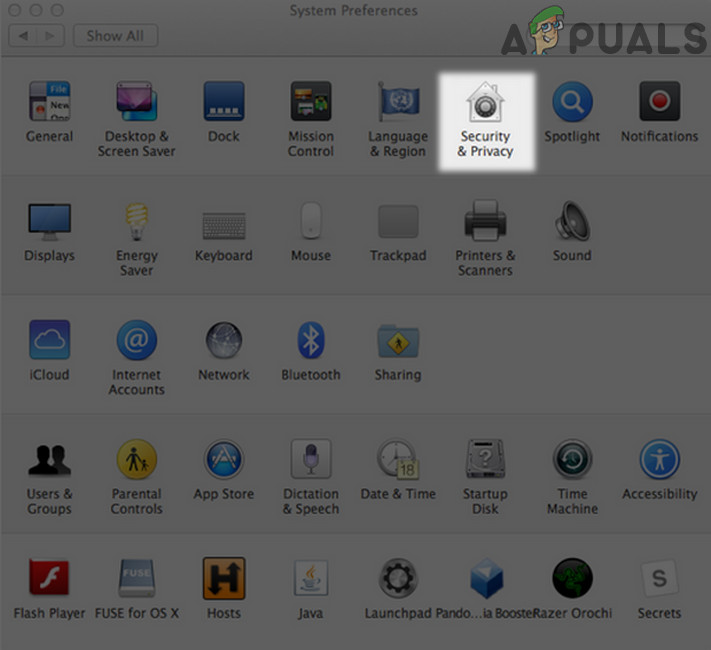
Open Security and Privacy in Mac’s System Preferences - Click the Firewall tab, click the padlock icon, and enter your administrator password.
- Open Firewall Options and make sure Block All Incoming Connections is not enabled.
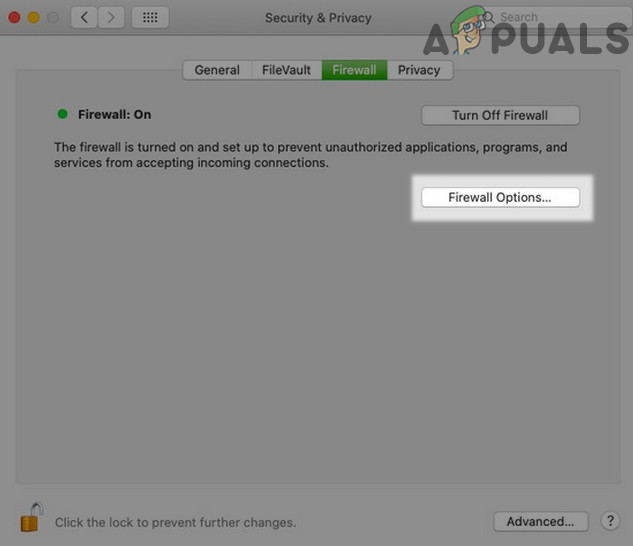
Open Firewall Options of Mac - Enable Automatically Allow Built-in Software to Receive Incoming Connections and check if AirPlay now works.
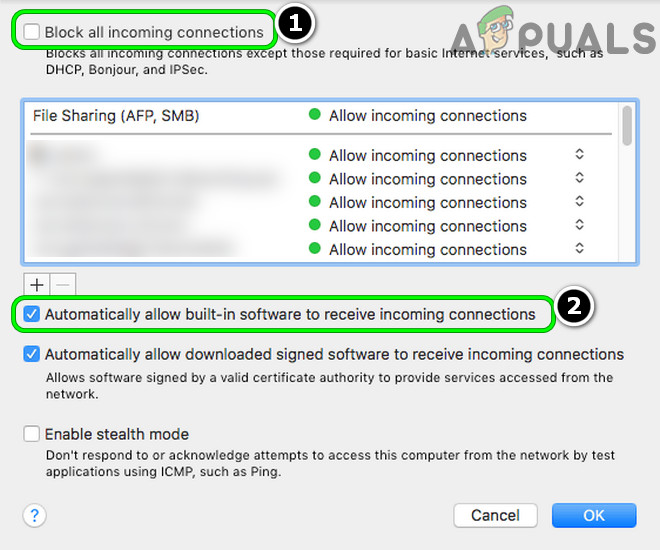
Adjust Firewall Settings in Mac’s Firewall - If the issue continues, try disabling the firewall completely to see if that solves the problem.
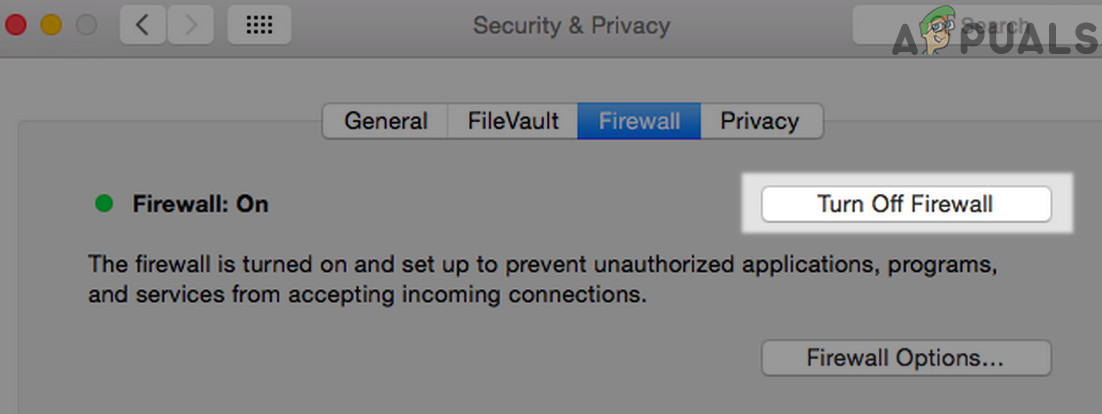
Turn off the Mac’s Firewall - If you can’t turn off the firewall from settings, open Terminal and enter:
sudo /usr/libexec/ApplicationFirewall/socketfilterfw --setblockall off
13. Reset the Samsung Smart Hub to Default
Resetting Smart Hub brings your TV’s software and apps back to factory settings, clearing out any glitches or configuration errors that stop AirPlay from working.
- Open your Samsung TV’s Settings and go to Support.
- Select Device Care, then open Self Diagnostics.
- Choose Reset Smart Hub and enter your TV’s PIN if prompted.

- Once Smart Hub is reset, set it up again and check if AirPlay works.
14. Reset Your TV to Factory Defaults
Incorrect settings or software problems can often cause AirPlay to fail. Resetting your TV to factory defaults erases all custom settings and returns the TV to a like-new state, which can fix many persistent problems.
- Open your Samsung TV’s Settings and choose Support.
- Select Self Diagnostics then choose Reset. If you don’t see Reset here, check in Settings > General.
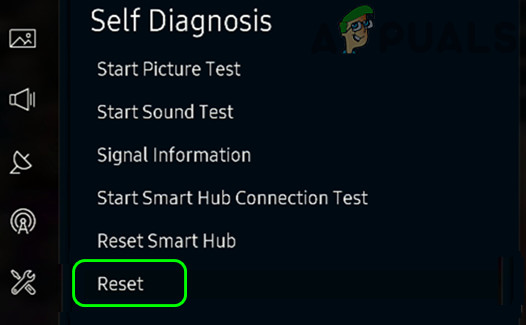
- Enter your TV’s PIN if prompted. Once the reset is done, set up your TV again as a new device.
- Check if AirPlay is now working correctly. If you’re still having trouble, set up the TV using the SmartThings app for another approach.
- If none of these solutions work, try adding your TV’s IP address to the DMZ in your router settings. As a last resort, consider factory resetting your host device (such as your iPhone or Mac).



